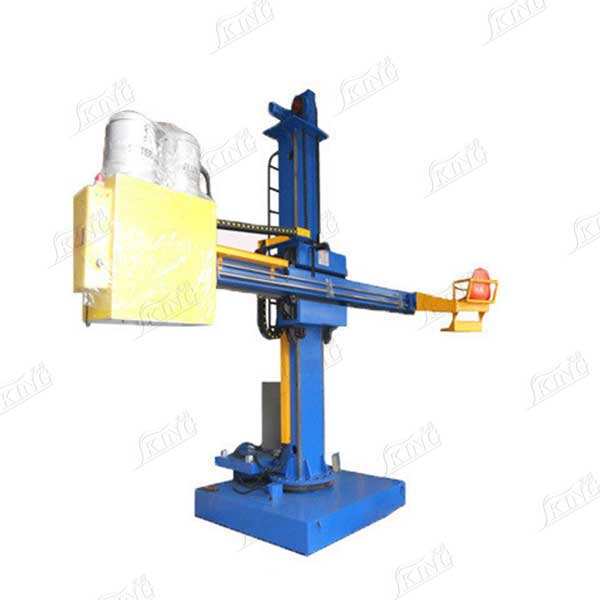Column welding stands as a critical component in construction and manufacturing, where precision meets structural integrity. The importance of column welding safety cannot be overstated, as it directly impacts both worker well-being and project success. In today's rapidly evolving industrial landscape, understanding and implementing proper safety protocols has become more crucial than ever before.
The construction industry witnesses thousands of welding-related incidents annually, many of which could have been prevented through proper safety measures. As we delve into the essential aspects of column welding safety, we'll explore comprehensive guidelines that every professional should follow to ensure a secure working environment while maintaining high-quality output.
Professional column welding demands comprehensive personal protective equipment (PPE). A proper welding helmet with appropriate shade ratings protects against harmful arc rays and spatter. Fire-resistant clothing, including jackets and pants made from appropriate materials like treated cotton or leather, provides necessary body protection. Steel-toed boots, flame-resistant gloves, and respiratory protection complete the basic safety ensemble.
Modern welding helmets often feature auto-darkening technology, which provides superior protection while improving work efficiency. When selecting PPE, professionals should consider factors such as comfort, mobility, and specific job requirements while never compromising on safety standards.
Creating a safe welding environment extends beyond personal protection. Proper ventilation systems must be installed to remove harmful fumes and maintain air quality. Fire extinguishers, first aid kits, and emergency equipment should be readily accessible. The work area must be clear of flammable materials, and appropriate welding screens or curtains should be used to protect nearby workers from arc flash.
Regular inspection and maintenance of safety equipment ensure their reliability when needed most. This includes checking ventilation systems, testing emergency equipment, and replacing worn-out protective gear.
Safe column welding begins with properly maintained and calibrated equipment. Regular inspection of welding machines, cables, and connections prevents electrical hazards and ensures consistent performance. Ground clamps must be securely attached, and all electrical connections should be properly insulated.
Equipment maintenance schedules should be strictly followed, with detailed documentation of all inspections and repairs. This proactive approach not only enhances safety but also extends equipment lifespan and maintains weld quality.
Environmental factors significantly impact column welding safety. Temperature, humidity, and air movement must be carefully controlled. Weather protection may be necessary for outdoor welding operations, while indoor facilities require proper climate control systems.
Modern monitoring systems can track air quality, temperature, and other environmental parameters in real-time, allowing for immediate adjustments when conditions deviate from safe ranges. This technological integration has revolutionized workplace safety management.

A comprehensive emergency response plan is crucial for column welding operations. This includes clear evacuation routes, emergency contact procedures, and specific protocols for different types of incidents. Regular safety drills ensure all workers know their roles during emergencies.
Documentation of emergency procedures should be readily available, and all workers must be trained in basic first aid and emergency response. Communication systems must be reliable and accessible throughout the work area.
Successful column welding safety programs incorporate regular risk assessments. This involves identifying potential hazards, evaluating their severity and likelihood, and implementing appropriate control measures. Common risks include fall hazards when welding at height, exposure to toxic fumes, and electrical dangers.
Modern risk assessment tools and software can help track and analyze safety data, enabling proactive hazard prevention. Regular safety audits and updates to procedures ensure continuous improvement in workplace safety.
Proper training forms the foundation of column welding safety. Welders must complete comprehensive certification programs that cover both technical skills and safety protocols. Regular refresher courses keep workers updated on new safety standards and techniques.
Professional certifications should be maintained and updated as required by industry standards. This includes specific certifications for different types of welding and safety-related qualifications.
Safety education should be an ongoing process, incorporating new technologies and methodologies as they emerge. Regular safety meetings, workshops, and practical demonstrations help maintain awareness and reinforce proper procedures.
Digital learning platforms and virtual reality training systems are increasingly being used to provide immersive, risk-free learning experiences for welding professionals.
The future of column welding safety is being shaped by technological innovations. Smart PPE with integrated sensors can monitor worker health and environmental conditions. Automated welding systems reduce human exposure to hazards while maintaining precision.
Artificial intelligence and machine learning are being integrated into safety systems, providing predictive maintenance alerts and real-time safety monitoring. These advances contribute to a safer, more efficient welding environment.
Safety standards and regulations continue to evolve, driven by new research and technological capabilities. Organizations must stay informed about changing requirements and adapt their safety programs accordingly. International standards are becoming more harmonized, creating consistent safety expectations across different regions.
Industry collaboration and information sharing help establish best practices and improve safety standards globally. Professional organizations play a crucial role in developing and promoting these standards.
The most critical safety measures include proper PPE usage, maintaining well-ventilated workspaces, regular equipment maintenance, comprehensive training, and strict adherence to safety protocols. Emergency response plans and risk assessment procedures are also essential components.
Welding safety equipment should undergo daily visual inspections before use, with more thorough inspections conducted weekly. Professional maintenance checks should be performed quarterly, and all equipment should be certified annually. Documentation of these inspections should be maintained for compliance purposes.
Certification ensures welders possess the necessary skills and knowledge to perform their work safely and effectively. It validates understanding of safety protocols, equipment operation, and emergency procedures. Regular recertification helps maintain high safety standards and keeps professionals updated on new industry requirements.
 Hot News
Hot News2025-11-18
2025-11-24
2025-11-11
2025-11-05
2025-11-03
2025-10-28